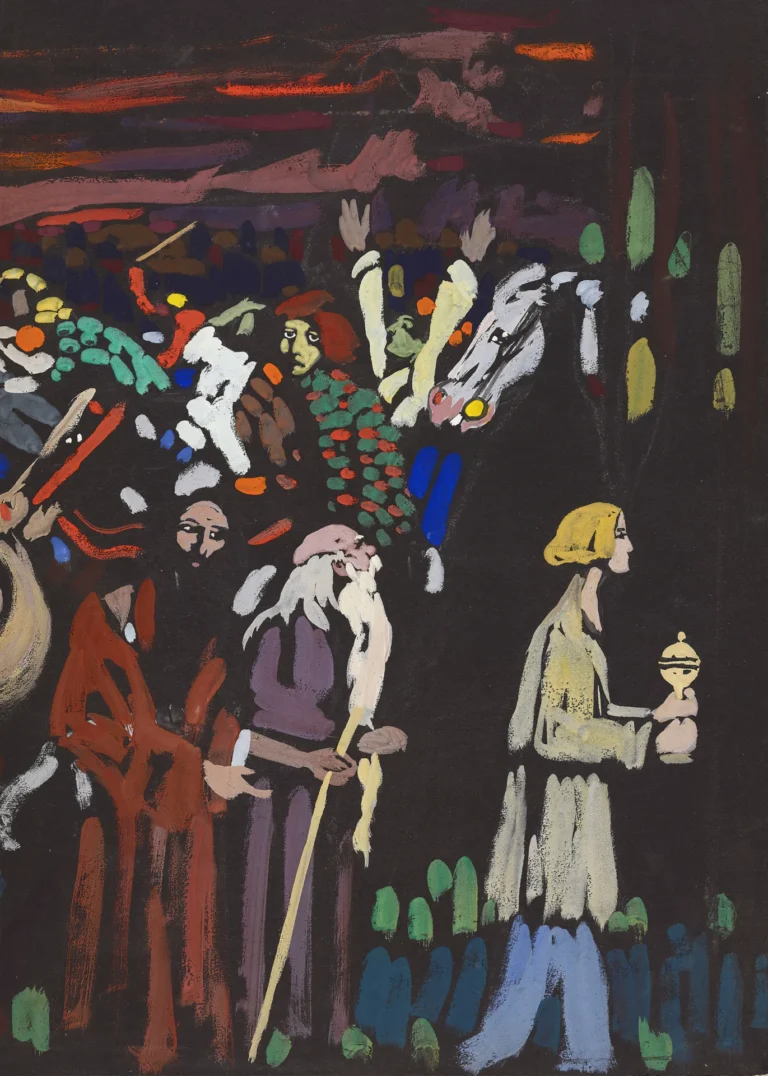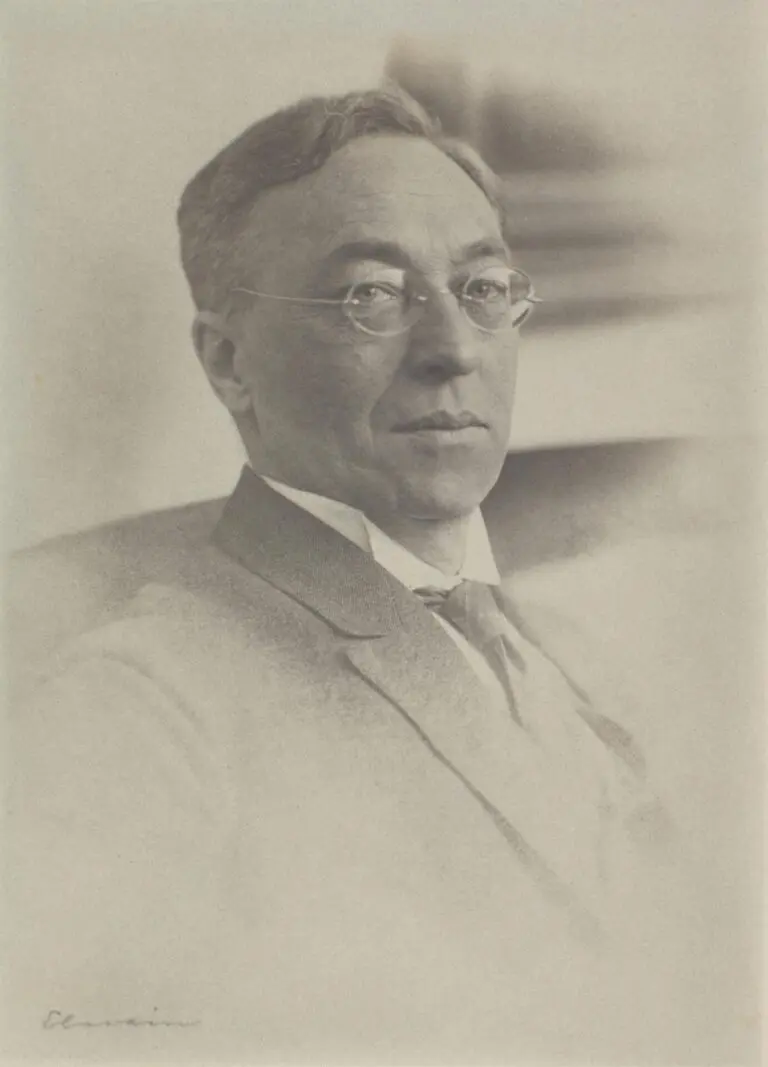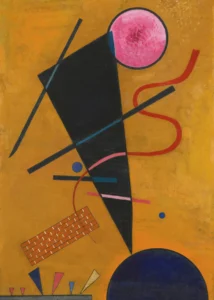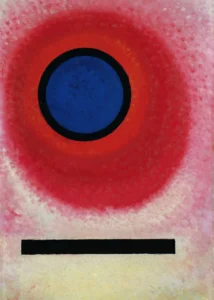Study on Panic (1907)
Wassily Kandinsky's 'Study on Panic', painted in 1907, marks a pivotal moment in the evolution of abstract art. This piece is characterized by its bold colors and dynamic brushwork, reflecting Kandinsky’s exploration of emotional expression through art. It is emblematic of his journey towards abstraction, capturing the tensions and rhythms of human emotion. Available in various print forms, it is an important early work that showcases the artist's innovative style and vision.
Year 1907
About the Artwork
'Study on Panic' was created during a transformative period in Wassily Kandinsky's career as he began to move away from traditional representational art towards the exploration of abstraction. Kandinsky sought to convey the emotional depth of his experiences, and this painting captures his preoccupation with the chaos of human emotions. The bold colors and swirling forms depict an evocative atmosphere, pressing viewers to confront their own feelings of anxiety and unrest. As he experimented with color theory and the influence of music on visual art, this piece is a thrilling glimpse into the mind of a true pioneer of modern art.
Did You Know
Wassily Kandinsky is celebrated as one of the founding figures of abstract art, and ‘Study on Panic’ is a critical example of his early forays into this transformative style, which would influence countless modern artists.
Kandinsky believed that colors had inherent emotional meanings. In ‘Study on Panic’, his vivid color choices aim to evoke a visceral response, mirroring the tumultuous feelings that inspired the piece.
Kandinsky often drew parallels between art and music, considering them both as forms of expression. He famously stated that ‘color is the keyboard, the eyes are the harmonies.’ This suggests that ‘Study on Panic’ is designed to create a musical experience through visual elements.










